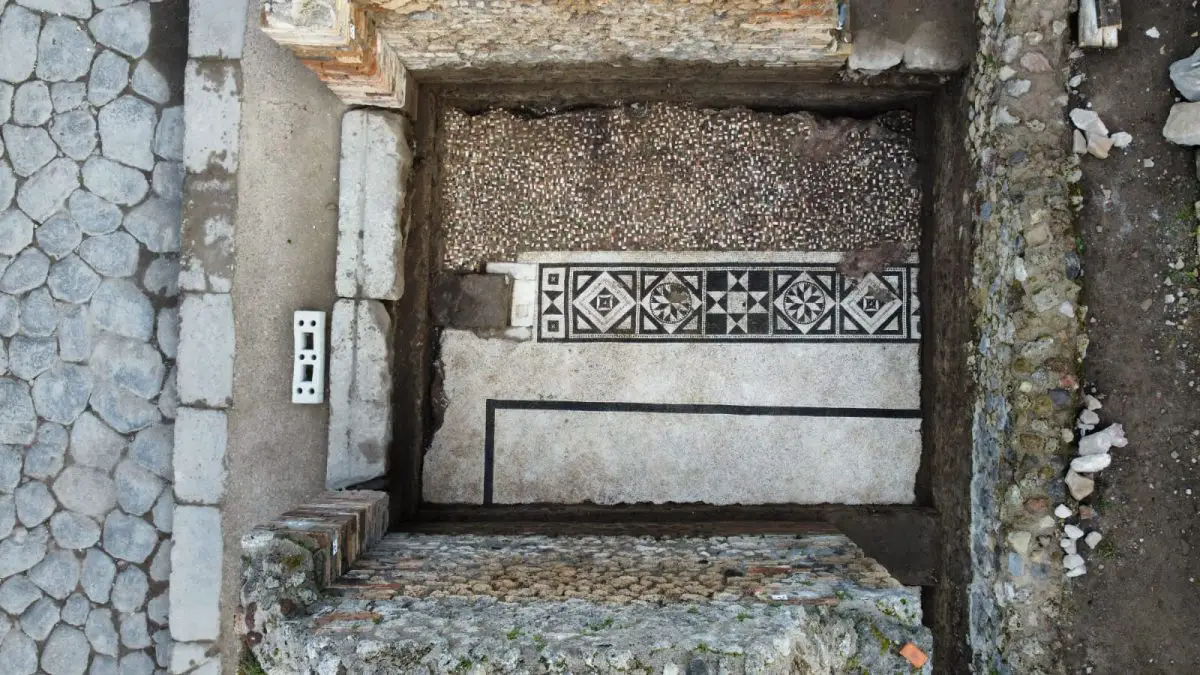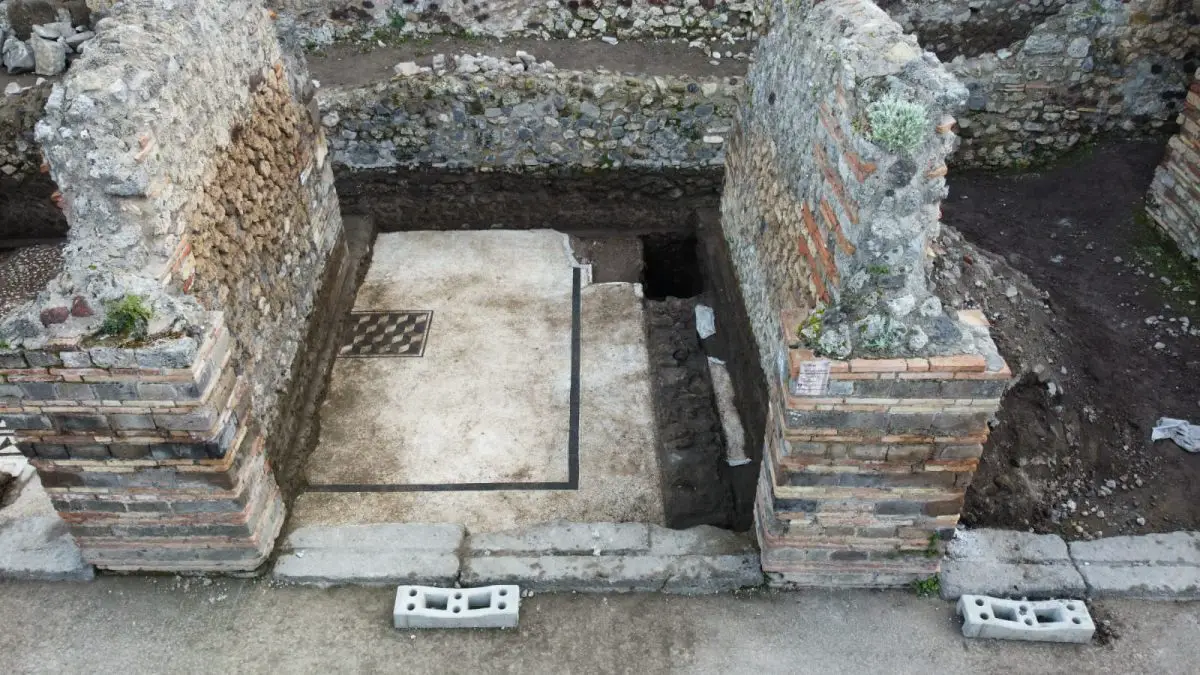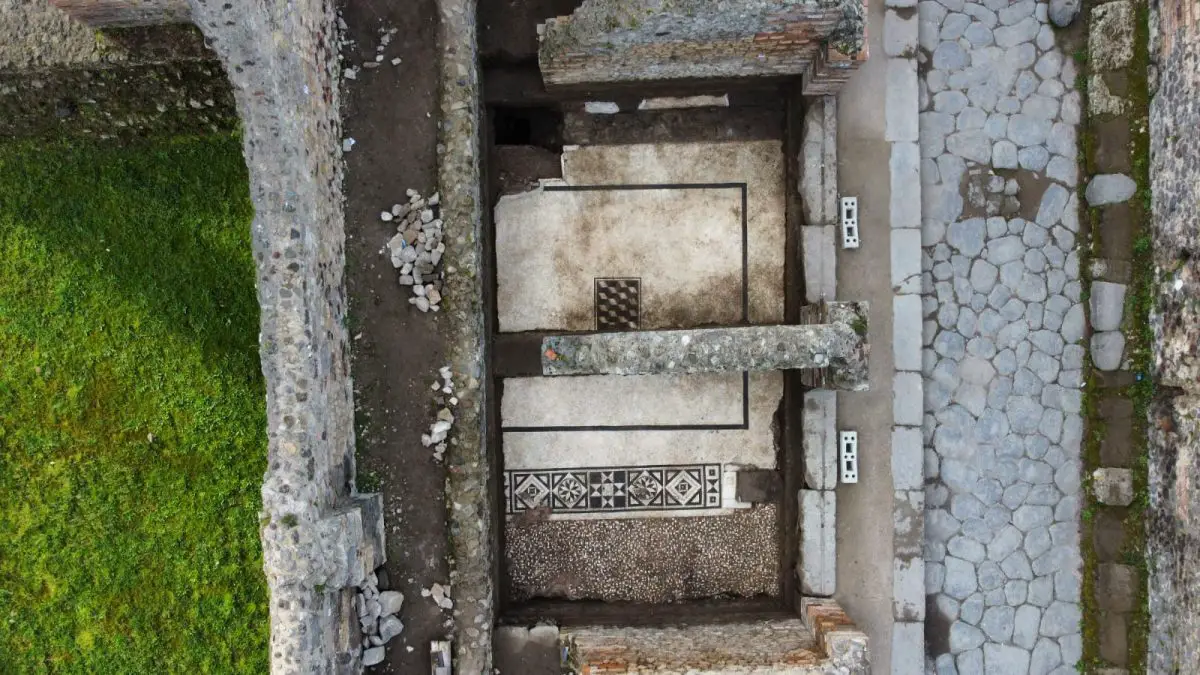Archaeologists have uncovered a section of mosaic flooring in Roman Pompeii that was abandoned following the earthquake of AD 62.
Pompeii was a Roman city, located in the modern commune of Pompeii near Naples in the Campania region of Italy. Pompeii, along with the Roman town of Herculaneum were buried under 4 to 6 metres of volcanic ash and pumice during the eruption of Mount Vesuvius in AD 79.
In AD 62, the region was struck by an earthquake that had a magnitude of V to VI on the Mercalli scale. The maximum felt intensity is estimated to have been in the range of IX to X, resulting in severe damage to buildings in Pompeii and the surrounding region. A Bas-relief found in the lararium of the House of Lucius Caecilius Iucundus depicts the events, showing damage to the city and Pompeii’s Temple of Jupiter.

Recent excavations involving archaeologists from the Archaeological Park of Pompeii, the Freie Universität Berlin, and the University of Naples L’Orientale, have revealed a section of mosaic flooring off the via dell’Abbondanza, the main street (decumanus maximus) which passed through the city.
The mosaic is part of the flooring of a domestic domus, where the Stabian Baths would later be constructed in the 2nd century AD. The domus was flattened in the years following the earthquake and the area was converted for part of the bath complex and several shops.
The team were excavating in the western part of the bath complex in an area known as 3 tabernae, a corridor behind the natatio (swimming pool) the that leads onto the vicolo del Lupanare.

Below the AD 79 floor level of the corridor, archaeologists found the remains of a white mosaic bordered by a black band with a central polychrome emblem featuring a geometric pattern.
The pattern was made with black, white and green tesserae, bordered by a double red and black band which is a similar design to the opus sectile floors of the cella of the temple of Apollo, the tablinum of the house of the Faun, and an exedra found in the house of Triptolemus at Pompeii.
Gabriel Zuchtriegel, Director the project, said: “Thanks to new research by the University of Berlin and the University of Naples, today we can begin to rewrite the history of the block, inserting a further chapter, that of a sumptuous domus with exceptional mosaics and spacious rooms, which occupied the western part of the baths area until a few decades before the eruption in AD 79.”
Header Image Credit : Pompeii Sites





